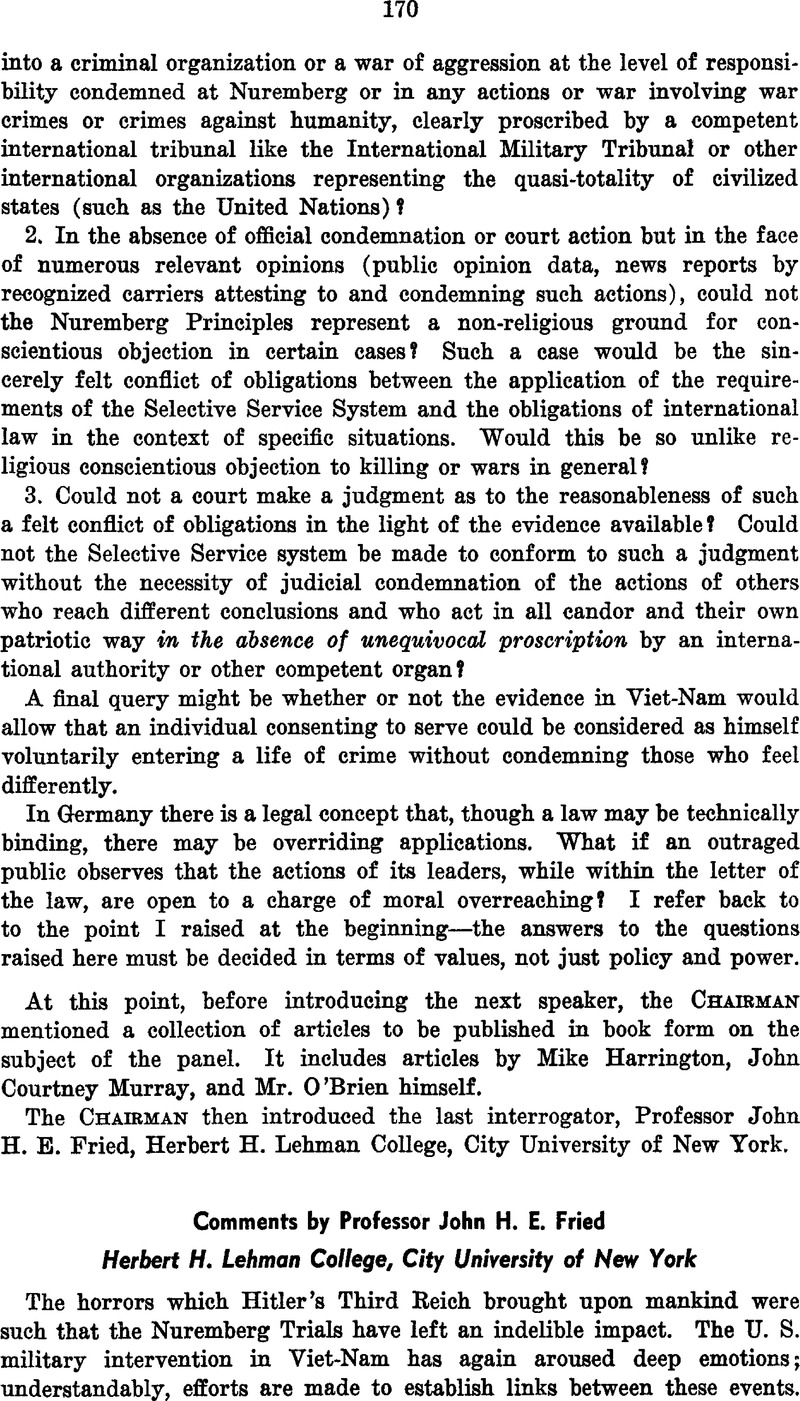No CrossRef data available.
Published online by Cambridge University Press: 27 February 2017

1 Trial of the Major War Criminals before the International Military Tribunal, Nuremberg (Nuremberg, 1947), Vol. I, p. 223.
2 I would not agree with Mr. Forman's formulation, namely, that the U.N. Charter “reinforced the status of aggression as an international crime.” The U.N. Charter did less and more: less by being silent on crimes against peace (the term was written into the London Charter of Aug. 8, 1945, only after the adoption of the U.N. Charter on June 26, 1945); and more by prohibiting not only aggressive war but, with only specific exceptions, the use or threat of force altogether in the international relations of all Members (Art. 2, par. 4).
3 Trial of the Major War Criminals, op. cit. 223. In the same context, the Judgment declares: “That international law imposes duties and liabilities upon individuals as well as upon States has long been recognized.” (Quoting Ex Parte Quirin.)